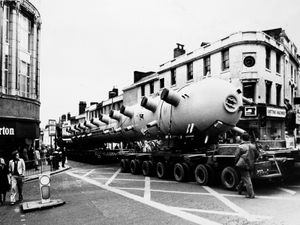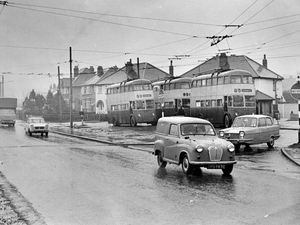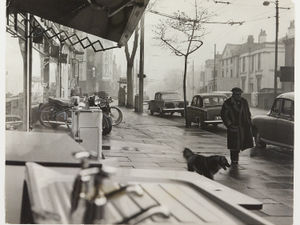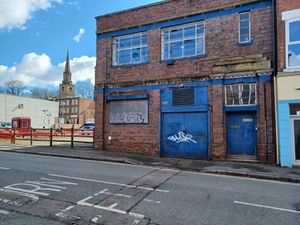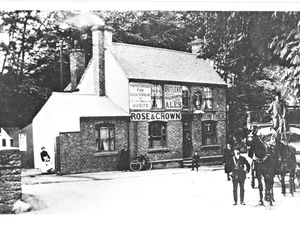Women's suffrage centenary: Discover more about Wolverhampton's heroines and their legacy
One hundred years ago, some women were given the right to vote in a historic and landmark ruling by the government.
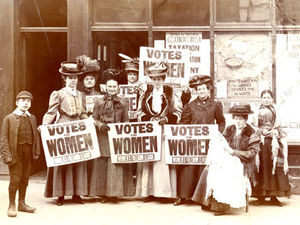
The Representation of People Act became law on February 6, 1918, which entitled women over 30, who were occupiers of property or married to occupiers, to vote.
It was down to the campaigning of the suffragettes - who put their lives on the line to change the system - that this move came about.
Their actions helped pave the way for a greater reform on voting over the next next century.
And the Express & Star brings you the extraordinary stories of some of the heroines determined to change the future for women across the Black Country and Staffordshire.
Emma Sproson - From jail to becoming Wolverhampton's first female councillor
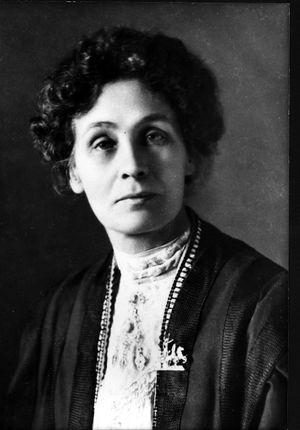
One leading member was Emma Sproson Lloyd - born in 1867 at Pikehelve Street, West Bromwich - and later became involved in politics in Wolverhampton.
She ended up being thrown in prison for being part of a demonstration in London, which saw more than 700 suffragettes try and force entry to the Houses of Parliament.
Police on horseback were brought in to tackle them and officers arrested 66 women, including Emma.
She was jailed for 14 days in the notorious Holloway Prison, where she fell sick due to the poor living conditions and food.
She was sent messages of support from friends.
Emma went on to become the first female councillor in Wolverhampton, representing the former Dunstall Ward for Labour.
She later stood as an independent councillor after becoming disillusioned with the party, but lost her seat.
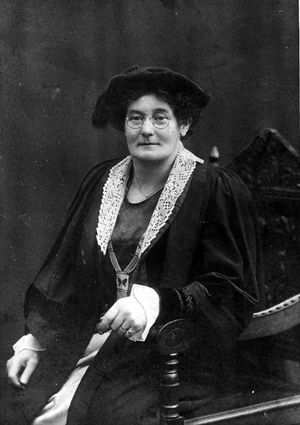
However her commitment to campaigning for women's rights, for the poor and to improve living conditions, has earned her name in the history books.
Wolverhampton and Labour councillor Claire Darke paid tribute to her efforts.
Ms Darke, who is cabinet member for education, said: "I think she put Wolverhampton on the map. I think she represented the strong will of women.
"She was a great advocate for the poor. I think there was quite a struggle. There was a lot of industry in Wolverhampton. Wages and conditions weren't very good, working conditions were poor.
"There was a lot of rights to be fought for. Things that we take for granted for now, they had to be fought tooth and nail for.
"Getting just the vote was hard but to get worker's rights and the welfare state, she was at the forefront of all of that."
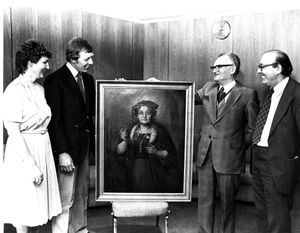
Despite her rise to political prominence, Emma was brought up in extreme poverty.
She was one of seven children of a canal boat builder.
In 1875, she moved with her family to Daisy Bank, in Coseley. Emma had to pick coal from pit bonks and run errands.
She left school at nine and had to go into domestic service, moving to Southport as a Sunday school teacher.
However she returned to Wolverhampton on the year of her 28th birthday, and opened up a small shop to provide for her family.
Emma joined the Independent Labour Party and in 1896 met and married Frank Sproson, a postman and secretary of the Wolverhampton branch.
The couple had three children.
Emma joined the breakaway Women’s Freedom League in 1908, after a split in the suffragettes movement.
She saw a further two stints in prison in Stafford Gaol in 1911 for taking part in moral force tactics - such as chalking slogans on pavements, declining to complete a census form and refusing to purchase a dog license.
She became known as Red Emma after winning a council seat in 1921, and waving a red flag from the town hall balcony.
Emma died in 1936.
Today, she has a blue plaque in her honour outside Wolverhampton Magistrates' Court.
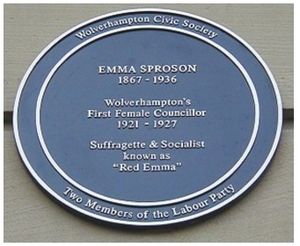
The Express & Star wishes to thank councillors John and Judith Rowley for their help with this article.
Louise Dawson - Was Wolverhampton the first place in the UK where a woman voted while it was still illegal?
In 1908 there was a by-election in Wolverhampton. A woman called Louise Dawson lived at Red Hill Street.
And in a quirk of fate on the electoral register, her name was incorrectly printed as Louis Dawson, with an 'e' missing.
Wolverhampton senior archivist Heidi McIntosh takes up the story.
"Some of the women involved in the suffrage society had spotted this and got in touch with this woman," she said.
"They said 'look you can go along and vote because your name is on the register'.
"So she went along not really believing that she would be able to do it.
"But the polling clerk checked the record and her name was on there, and she did actually vote.
"And there was a group outside cheering her on. I believe that is one of the earliest, in the UK, examples of a woman who was able to vote."
The Express & Star wishes to thank Wolverhampton council and Wolverhampton City Archives for the information
Queen Street and the Wolverhampton Suffragettes
In recognition of the anniversary, Michelle Nicholls explores the link between Queen Street and the Wolverhampton suffrage movement.
"The National Union of Women’s Suffrage Societies (NUWSS), otherwise known as the Suffragists, was founded in the late 19th century to advance the rights of women through peaceful and legal means.
"From 1904, a Wolverhampton branch was known to exist and chaired by Clara Winifrede Graham who happened to be the wife of Thomas Graham, owner of the Express and Star newspaper which operated from 51 Queen Street.
"It is well documented that the women of Wolverhampton played an important part in the story of women’s suffrage.
"It is less known that Queen Street acted as a vibrant hub of suffrage activity in the early 20th century.
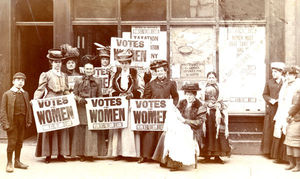
"Annual reports, housed at Wolverhampton City Archives, reveal that in 1909, a total of six meetings were held at 52 Queen Street.
"The six meetings are described as ‘at home’ meaning that the premises probably belonged to someone within the branch although this has proved difficult to confirm due to gaps in the historical record.
"We do know that by 1916, number 52 was owned by the Graham family. Therefore, it is possible that the property came into Graham family ownership slightly earlier and the space subsequently loaned to the group by Mrs. Graham who held the prominent position of ‘Vice-President’ within the Wolverhampton branch.
"Although the annual reports tell us when and where these meetings took place, they reveal little of the women who attended the meetings. Who were they? What inspired them to join the suffrage movement? Did they attend marches and other national events? Did they meet with any prominent suffragettes such as the Pankhursts?
"Though we may not be able to answer these questions, it is fascinating to think of the women from the Suffrage Society meeting at 52 Queen Street and playing their part in the fight for women’s suffrage.
"The photograph above was originally thought to have been captured in Queen Street although further research has revealed that this is now unlikely.
"The image depicts members of the Women’s Freedom League which were a militant splinter group within the suffrage movement.
"Wolverhampton residents may be familiar with the story of Emma Sproson or ‘Red Emma’ who was a prominent member of this group [see above article].
"Irrespective of where the photograph was taken, it remains a powerful image of Wolverhampton women (and a young boy!) proudly campaigning for an important and worthy cause.
"The 1918 Representation of the People Act, which extended the right of suffrage to women aged 30 and above (with a property qualification), introduced 8.5 million more voters into the system.
"Sadly, Mrs. Clara Graham passed away in 1923, five years before the Equal Franchise Act which extended the right to all women over the age of 21.
"This Act increased the number of women eligible to vote to 15 million and most importantly, gave them the same voting rights as men."
This article was reproduced with kind permission of Wolverhampton council on behalf of the Wolverhampton City Archives and the Queen Street Heritage Project

